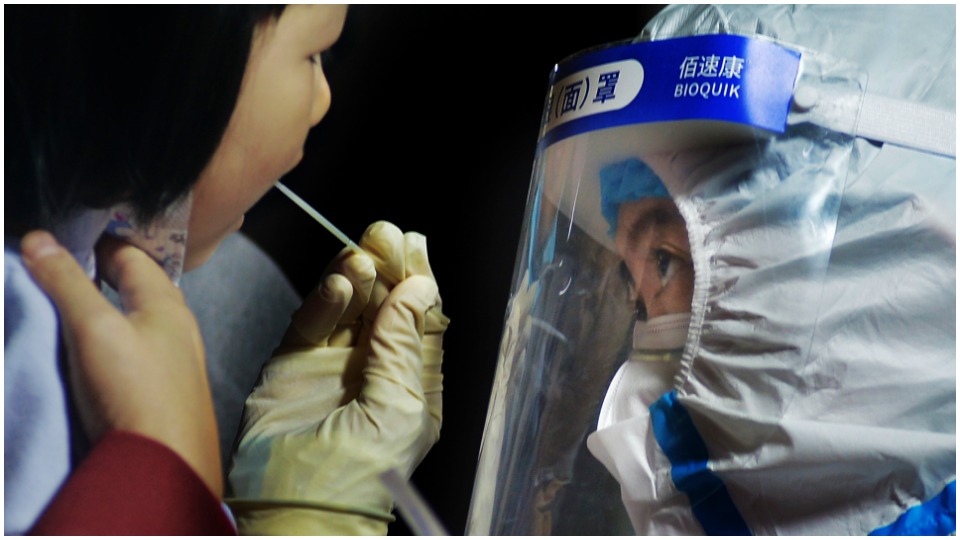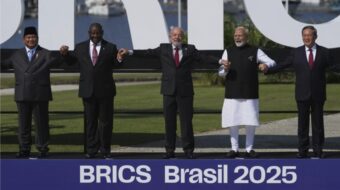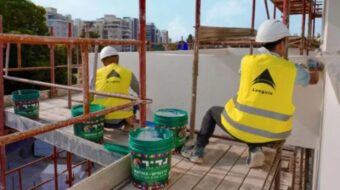
For as long as I can remember, I have been engaged in a practice many would consider masochistic. Get those images out of your head, I don’t mean that. Or that. No, my self-defeating habit is all too mundane to the casual observer: I read China stories in the Western media.
It’s not as bad as it sounds. Over time, you build up a sort of immunity to the indignation that is the gut reaction to any of these pieces. Eventually, you can even stop rolling your eyes. Sadly, that doesn’t last. Every so often, you encounter a headline so ignorant and offensive it brings all that old fury back, roaring forth in a tsunami of rage and ruining years of therapy.
The idiocy in question, found in an outlet I won’t name: “Can we trust Chinese COVID-19 science?”
I don’t mind sharing something personal here, dear reader. After seeing that headline, I had a few very rude things to say about this publication and its author. They are, alas, unprintable. But let me cool down for a moment and take that question seriously, even though it deserves no such treatment.
Where would we be without Chinese COVID-19 science?
Well, first of all, we wouldn’t have learned about the virus in late December. Doctors and scientists in Wuhan noticed pneumonia-like symptoms in patients and informed local health authorities, sending crucial details up the chain and setting the overall epidemic response in motion.
The WHO also wouldn’t have been informed of a pneumonia of unknown cause on Dec. 31, when those same authorities shared their preliminary findings. The U.S. Centers for Disease Control also wouldn’t have been told the same thing on Jan. 3—though given how the U.S. still waited months to take real action, maybe we should put that data point aside.
The genetic sequence of the virus—the foundation of all treatment, testing, and vaccine work—wouldn’t have been made public record. After 40 hours of near-constant work, Shanghai scientists shared the full genome of COVID-19 with the world, uploading the sequence to the open-access Genbank database on Jan. 5.

Universal adoption of mask-wearing wouldn’t have happened either. Both the U.S. CDC and World Health Organization were slow to encourage the practice, instead saying only sick people needed respiratory masks in the early weeks of the pandemic. China’s National Health Commission was the only major health authority to consistently stress the importance of masks for the entire population, healthy or otherwise. So that’s another obvious best practice gone if we ignore Chinese science—but judging by the refusal of some in the U.S. to wear masks even to this day, this isn’t even wholly hypothetical.
Mass testing and contact tracing is another Chinese policy which has been proven to work in containing the virus. Adapted from the country’s earlier response to the SARS epidemic, a network of temperature checks, fever clinics, and widespread nucleic acid tests helped choke out the virus and keep it localized. You don’t need to look too far to see an example of how essential these methods are; the U.S. steadfastly ignored China’s blueprint and now has more cases and deaths than anywhere else in the world.
And what of that elusive COVID-19 vaccine? China currently has four in the third stage of clinical trials and is likely to be the first country to have a viable inoculation ready for mass production. Will the skeptics refuse potentially life-saving treatment just to avoid giving China any credit? The answer to that question might be “yes,” considering how blinkered some are in their anti-China psychoses.
CHINA’S FIGHT AGAINST CORONAVIRUS:
Wuhan resident: China “nationalized” coronavirus crisis; the West isn’t doing enough
Lab lies: U.S. continues disinformation campaign about Wuhan virus lab
Charges of coronavirus ‘cover-up’ in China distract from Trump administration’s failed response
Trump’s “blame China” campaign is an effort to dodge responsibility
Some in the West, eager to downplay any positive examples from China, point to other Asian countries engaged in similar practices. But those places had weeks or months to prepare and modeled much of their response on what Chinese health officials were sharing with them. Ignoring China’s experience would force the rest of the world to develop these ideas independently, buying time with prolonged human suffering.
Maybe that’s what these “journalists” want. After all, there’s little more important to them than scoring points against a country they see as a mortal enemy. The shock and surprise with which they greeted China’s triumph over the virus betrayed their real sympathies. Rather than express relief that a country of over a billion people stemmed the tide of outbreak and prevented new cases and deaths, they could barely contain their disappointment. To them, the virus was an opportunity to castigate China’s system and prove Western capitalist “democracy” as a superior method of governance.
That opportunity has blown up in their faces. Those headlines from January and February arrogantly declaring “democracies are better at fighting outbreaks” are now the stuff of tragedy, as infection and death tolls rise in countries that previously exulted over China’s struggles. Commentators who gleefully predicted China’s collapse—practically fantasizing about mountains of corpses all the while—are now backpedaling, crafting absurd arguments to show they were right all along.
Hence the bizarre headline which started this little thought experiment. In the absence of a credible alternative to China’s pandemic control methods—and by extension China’s socialist system—all these cynics can do is poke holes in the country’s success by spreading fear, uncertainty, and doubt. Because their own governments failed so spectacularly, their only option is to tear down countries that have returned to relative normalcy. Their envy and hatred are palpable.
The fact is we already know the answer to that headline’s insipid question. We’ve known it since infection counts began dropping in March. By now, whatever doubts were lingering then should be long gone. If nothing else, the fact you can visit a restaurant or bar here in Beijing where I work and see it full of contented patrons shows people here trust their country’s science. I certainly do, and won’t be returning home to the U.S. to visit until I can be sure things have improved. Judging by the present state of affairs, my guess is that’ll be sometime in 2048.
So go ahead, oh wise and clever commentators. Don’t trust Chinese science. It’s your right.
But when the rest of the world is back to normal thanks to a Chinese vaccine, you’d better stick to your principles and stay inside.
As with all op-eds published by People’s World, this article reflects the opinions of its author.










